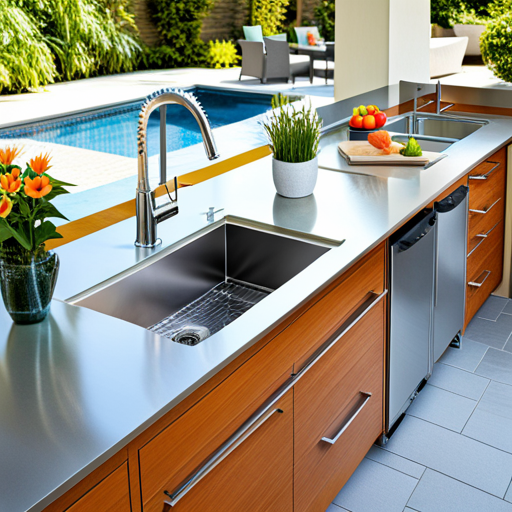Last Updated on June 14, 2024 by John Coleman
Perhaps by chance, you have discovered that the ground under your house is wet, flooded, or has standing water. Then, you begin to wonder, “Why is the ground under my house wet?” and “How do I to get rid of the water and moisture?”
Finding that the ground under your house is saturated with water should be very concerning and needs to be addressed as soon as possible. Whether you DIY, call a professional, or do a combination of both, there are 9 key steps to be taken to get rid of the water and prevent it from coming back:
- Decide your fix approach (DIY, hire a professional, combination of the two)
- Identify the moisture/water source and get it repaired
- Remove existing water (wet/dry vac, submersible pump, or transfer pump)
- Dry out and dehumidify (fans, dehumidifiers, absorption materials, and natural ventilation)
- Replace or repair any damaged structural items (floor joists, insulation, vents, crawlspace doors)
- Install a vapor barrier and possibly a dehumidifier to reduce humidity and moisture
- Install new insulated crawlspace entrance door and vents.
- Consider other additional features that may be unique to your space (i.e., french drains or a sump pump)
- Regularly monitor and maintain your crawlspace.
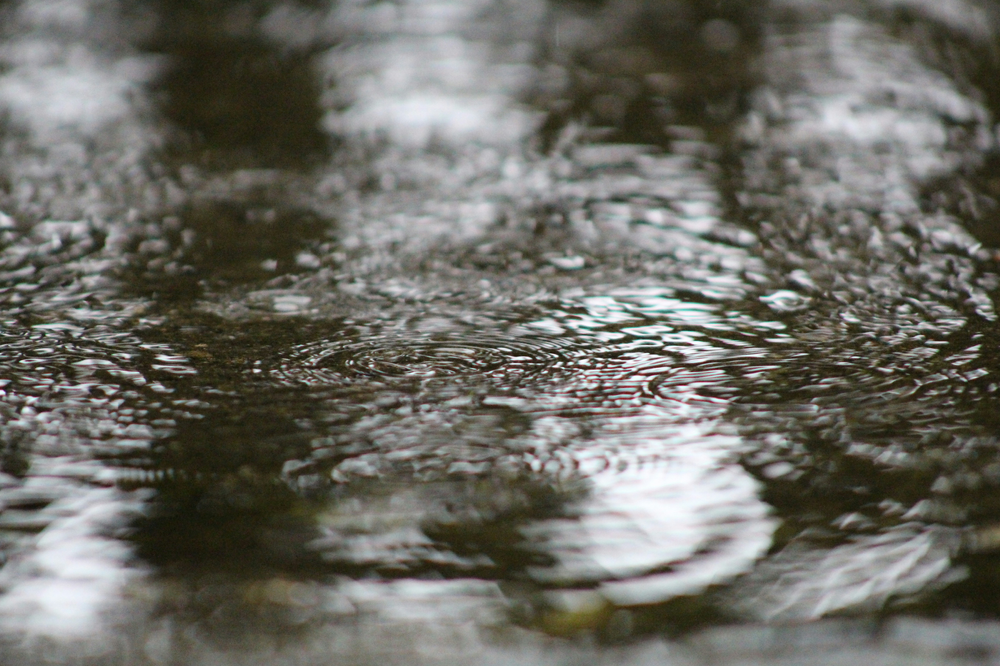
Discovering the ground under your house is wet or flooded can be both alarming and confusing. It’s a situation that may leave you wondering about the best course of action to take to mitigate damage and ensure the stability and safety of your home. While it’s natural to feel overwhelmed, it’s important to take a deep breath and approach the situation with practicality, knowledge, and empowerment. In this guide, I will walk you through what you need to know, how you may be able to utilize your DIY skills, and who you can call when the ground under your house is wet or flooded.
If you purchase through links on this site, we may earn a small commission. See our affiliate disclosure.
The Ground and Space Under Your House is Wet or Flooded
The ground and area under your home is called a crawlspace. It’s typically the area between the ground and the first floor of your home, allowing for maintenance, repairs, and access to plumbing and electrical systems. This space is essential to the structural integrity of your home and any issues with it should be addressed promptly.
Persistent Moisture in Your Crawlspace
Moisture in your crawlspace isn’t just an inconvenience. It can cause wood decay, structural damage, mold, pest infestation, and depreciate your home’s value. Additionally, it may spike energy bills, warp flooring, and create unpleasant odors in your house.
How to Check for Moisture Under Your House
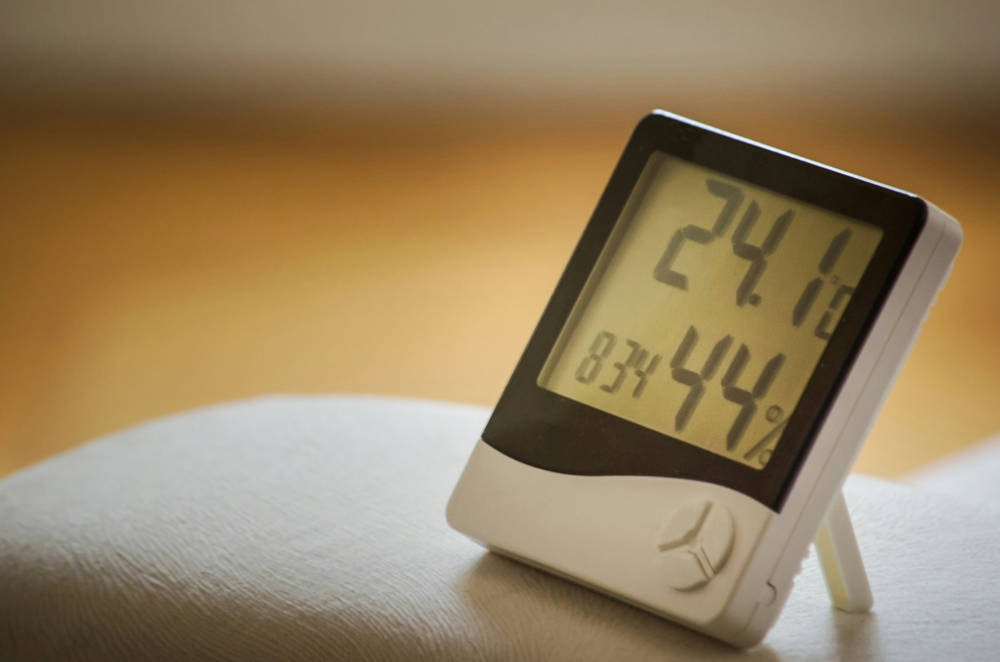
Assessing the crawlspace for moisture is a critical step in safeguarding your home’s
structural integrity. Utilizing tools like a hygrometer, available at this link, allows you to gauge humidity levels and identify potential moisture issues within your home. If a hygrometer indicates that your crawlspace has a moisture level above 60%, you likely have a moisture problem that needs to be addressed. The ideal moisture level under your home should be 55%-60%. It’s also essential to inspect the crawlspace after heavy rainfall or during periods of high humidity, as these are prime times for moisture intrusion.
Professionals That Can Help
As you assess for moisture in your crawlspace and begin to develop a plan to get the problem fixed, here is a list of professionals who can help along the way.
- Moisture control and crawlspace repair specialists – Professionals who specialize in addressing moisture issues and repairing any damage to the crawlspace structure. They can also provide recommendations for preventing future moisture problems. I would suggest a company like Groundworks that offers a free inspection that can be scheduled online.
- Plumber – A plumber would be able to inspect the plumbing under your home and make repairs if necessary.
- Landscaper – If the issue stems from poor drainage around your home, a landscaper can help to improve the grading and redirect water away from your crawlspace.
- Licensed Contractor – If you need to make any repairs or alterations to your home’s foundation or structure such as floor joists or walls, a licensed contractor would be the best professional for the job.
- Gutter Contractor – Clogged or damaged gutters can contribute to moisture issues in your crawlspace, so it’s essential to have them inspected and repaired if needed.
- Structural Engineer – If you notice any significant issues with your foundation or structure, a structural engineer can help assess the problem and provide recommendations for repair.
- Electrician – If you have any electrical components in your crawlspace, it’s important to have an electrician check for any potential safety hazards due to moisture.
9 Basic Steps to Repair and Correct the Moisture Problem in Your Crawlspace
If you suspect your crawlspace has a moisture issue, don’t panic. With the right tools and knowledge, you can tackle this problem head-on and prevent potential damage to your home.
If you are unsure about any of the steps below or need guidance in the process, it is always a good idea to consult with a professional to make sure the job is done correctly. If you don’t, it could end up costing you more in the long run.
Step 1: Decide What Approach You are Going to Take
There are 3 approach options that I typically use when I take on a task like this. The approach you choose will likely depend on your skill and comfort level of taking on this project. The 3 approaches I would recommend are:
DIY Approach: If you have DIY experience with home projects and feel secure in your abilities, a DIY approach can save you money. However, keep in mind that fixing moisture issues can be time-consuming and physically demanding.
Hybrid DIY Approach: If you’re not comfortable tackling the project on your own, a hybrid DIY approach may be the way to go. In this approach, you can do some of the work yourself and hire professionals for more complex tasks.
Hire a Professional: For those who are short on time or lack experience with home improvement projects, hiring professionals is always an option. While it may require a larger financial investment, it can save you time and ensure the job is done correctly.
Step 2: Identify the Source of the Moisture and Get It Addressed and Repaired
Since you have already used your hygrometer and it has indicated there is a moisture problem, now it is time to find where the moisture is coming from and get it fixed. Remember, it is always okay to call a professional if you don’t feel confident DIYing any of these steps. You will want to look at the following:
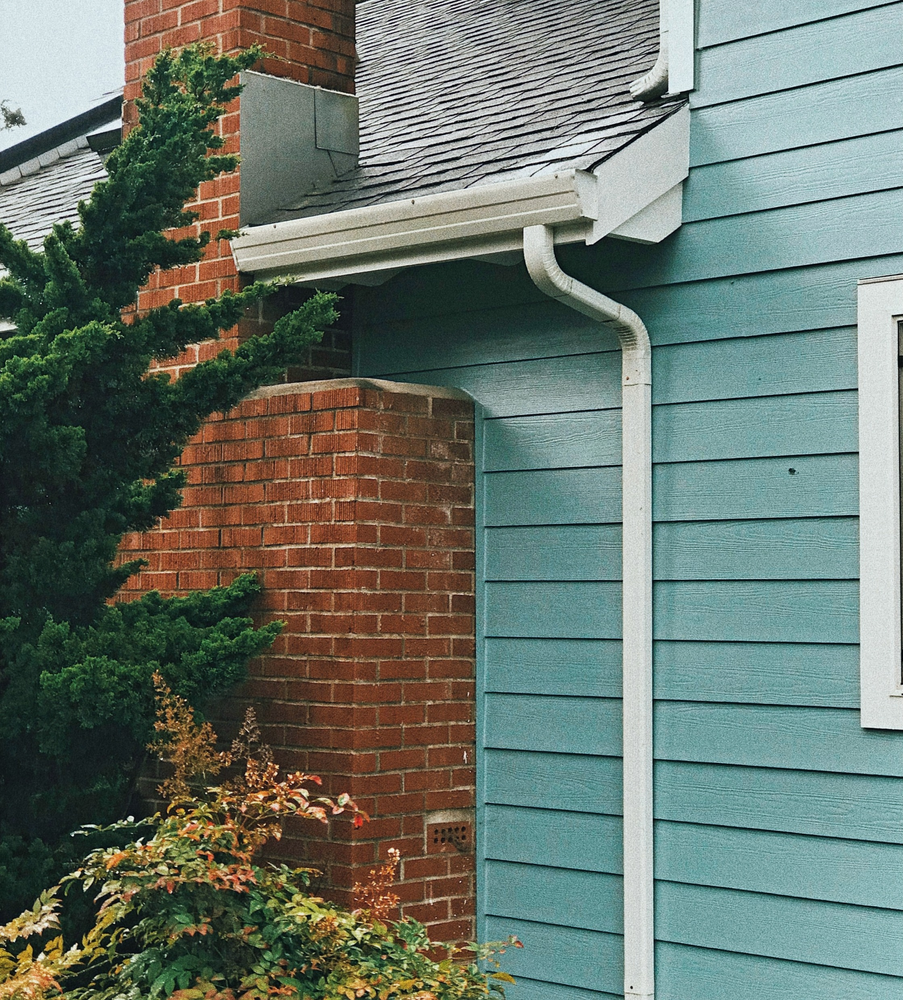
Leaking or Busted Pipes: Plumbing leaks, no matter how small, can contribute significantly to the moisture levels in your crawlspace, leading to bigger problems if left unchecked.
Poor Drainage/Improper Grading: If rainwater or groundwater is not properly diverted away from your home, it can accumulate around the foundation, seeping into the crawlspace.
Heavy Rain: A heavy rainstorm can cause water to pool in your crawlspace, especially if you have clogged gutters or downspouts. Check your gutters and downspouts to be sure they are patent and clear.
Missing or Damaged Vapor Barrier: A vapor barrier helps prevent ground moisture from rising into the crawlspace. If it’s absent, damaged, or improperly installed, moisture can intrude. If you are going to DIY install a vapor barrier, be sure to use reinforced poly sheeting (thickness of 10 mil or higher) because of its durability.
Damaged Insulation: Insulation that has been damaged by pests or moisture can become ineffective, leading to increased moisture levels in the crawlspace. You need to remove the damp insulation. Rigid insulation foam board is recommended as a replacement after the crawlspace has been dried out. You can find it at your local home improvement store.
External Climate Conditions: High humidity levels outdoors can increase the moisture level inside the crawlspace, especially during certain times of the year. Installing a dehumidifier can help keep the moisture levels in check.
Damaged Seal Vents: During hot and humid weather, it’s important to seal off the vents in your crawlspace to prevent outside air from entering and contributing to moisture levels.
Condensation on Cool Surfaces: Pipes and other metal surfaces can collect condensation in a humid crawlspace, contributing to the overall moisture problem. Insulating these surfaces can help prevent condensation and reduce moisture levels.
Groundwater Seepage: Especially in areas with high water tables, water can seep through the soil and into the crawlspace, causing dampness. Installing a sump pump and properly sealing any cracks or openings in the foundation can help prevent groundwater seepage. Make sure your crawlspace has proper drainage (i.e., a French drain).
Rain/Snowmelt Seeping Through Walls and Cracks: Water can find its way into your crawlspace through small cracks in the foundation or walls, as well as gaps around pipes and vents. Regularly checking and sealing these areas can help prevent moisture intrusion. Additionally, making sure the ground slopes away from your home’s foundation can also help redirect rain and snowmelt away from your crawlspace.
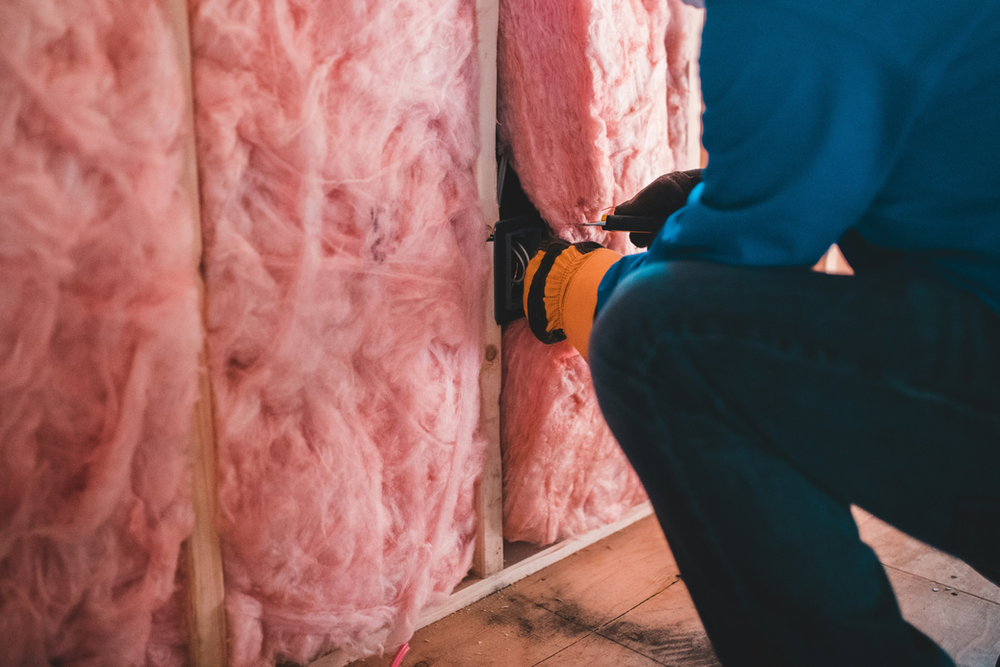
If you purchase through links on this site, we may earn a small commission. See our affiliate disclosure.
Step 3: Remove Any Existing Water
Now that you have identified the source of the moisture and have it fixed, you need to remove any existing water and moisture. Here is how:
If your crawlspace has standing water or the area is flooded, you can use the following tools to quickly get the water out:
Wet/dry vacuum – A wet/dry vacuum is a powerful tool that can quickly suck up water from your crawlspace. Make sure to use an outdoor outlet and follow all safety precautions.
Submersible Pump – If the standing water is deeper than a few inches, using a submersible pump can help quickly remove large amounts of water.
Transfer Pump – A basic electric transfer pump can be used to drain water to the outside. Again, be sure to use an outdoor receptacle and follow all safety precautions. If the standing water is located further away from an outdoor outlet, you can use a battery operated transfer pump to pump the water into a bucket. This will be more labor intensive because you will have to make multiple trips outside the crawlspace to dump the water out of the bucket.
Sump Pump – If you have a sump pump installed in your crawlspace, make sure it is functioning properly and clear any debris from the pit. (Be sure that you are directing the water far away from the house so that it doesn’t end up right back in the crawlspace.)
Step 4: Dry Out and Dehumidify
Once all standing water has been removed, the next step is to dry out the area and reduce humidity levels. Here are some methods you can use:
- Fans: Placing fans in the crawlspace can help circulate air and dry out any remaining moisture.
- Dehumidifier: Using a dehumidifier in the crawlspace can help remove excess moisture from the air.
- Natural ventilation: Opening windows and doors on opposite sides of the crawlspace can create a natural airflow to help dry out the area.
- Exhaust fan: Installing an exhaust fan in one of the vents leading to the outside can help remove damp air from the crawlspace. (Make sure to close any other vents or windows during this process to maximize the effectiveness of the exhaust fan.)
- Sand – Use sand to fill in any holes or low spots in the crawlspace. This will speed up the drying process.
How Long Does It Take to Dry Out a Crawlspace?
The time it will take to dry out and dehumidify the area will depend on the size of your crawlspace and the amount of water that was present. Keep an eye on the humidity levels with your hygrometer and continue drying until they are within a normal range (Hygrometer reading of < 60%)
Step 5: Replace or Repair Any Damaged Structural Items
Excess moisture can cause damage to structural items in your crawlspace. After you have eliminated the source and removed the excess water, here is a list of items that may need to be replaced:
Wooden Beams: If you notice any wooden support beams or floor joists in your crawlspace that are damp, soft, or rotting, they will need to be replaced. This is important for the structural integrity of your home.
Insulation: Moisture can also cause damage to insulation in your crawlspace. Remove and replace any damaged insulation to prevent mold growth and improve energy efficiency.
Flooring: If you have a concrete or dirt floor in your crawlspace, it may be prone to moisture issues. If you have a moisture barrier that is damaged or improperly installed, it’s a good idea to replace it.
Ductwork: Excess moisture can also cause damage to ductwork in your crawlspace. Inspect and replace any damaged or leaking ducts to improve the efficiency of your HVAC system and prevent mold growth.
Electrical Wiring: Moisture can cause damage to electrical wiring in your crawlspace, creating a safety hazard. Any exposed or damaged wires should be replaced.
Sump Pump: If you have a sump pump installed in your crawlspace, make sure it is functioning properly and replace any damaged or malfunctioning parts.
Crawl Space Door: The door to your crawlspace may also be affected by excess moisture, leading to warping or rotting. If it is damaged, replace it with a new insulated one.
Landscaping: The landscaping around your crawlspace can also contribute to moisture issues. Make sure the ground slopes away from the foundation and consider installing gutters and downspouts to direct water away from the house.
Mold Removal: If you discover mold in your crawlspace, it’s important to address it immediately. Mold can not only cause structural damage but also pose health risks for you and your family.
Step 6: Install a Vapor Barrier and Possibly a Dehumidifier
In addition to addressing any structural issues, a vapor barrier and dehumidifier can also help keep your crawlspace dry. A vapor barrier is a moisture-reducing cover made out of plastic or foil that is installed over the ground in your crawlspace to prevent moisture from seeping through. This can be particularly beneficial if you live in an area with high humidity levels. Don’t forget that you will need vapor barrier tape to connect the sheets of vapor barrier.
A dehumidifier is a useful tool for controlling moisture in your crawlspace. It works by removing excess moisture from the air, making it less likely to condense on surfaces and cause issues like mold growth. If you choose to install a dehumidifier, make sure to regularly check and empty the collection tray.
Step 7: Install A New Insulated Crawlspace Entrance Door and Crawlspace Vents
Another important aspect of maintaining a dry crawlspace is properly sealing and insulating the entrance door. An insulated door will help prevent outside air from entering, which can lead to temperature fluctuations and moisture issues. Additionally, make sure your crawlspace vents are properly functioning. If they are clogged or not working appropriately, it is likely time to replace them. There are different sizes of crawlspace vents so be sure to measure before purchasing one.
Step 8: Consider Any Additional Features or Upgrades
Finally, depending on your specific crawlspace and home improvement needs, you may want to consider additional features or upgrades. This could include a sump pump for excess water removal, a drainage system to redirect water away from your crawlspace, or encapsulating your entire crawlspace with a moisture barrier. These measures can help ensure that your crawlspace remains dry and free of any potential issues.
Step 9: Regularly Monitor and Maintain Your Crawlspace
Once you have addressed any moisture or structural issues and installed necessary barriers and equipment, it’s important to regularly monitor and maintain your crawlspace. This includes checking for signs of moisture, mold growth, and pest infestations.
Additionally, make sure to keep the area around your crawlspace clear of any debris or vegetation that could potentially trap moisture and attract pests. Schedule regular inspections at least once a year to catch any potential issues early on.
The Easy Route – Hire a Professional To Do It All
Some jobs seem too large to take on or you just don’t have the time for a DIY fix. Now and then it is okay to just let somebody else take care of it. If you have decided to hire someone to fix your crawlspace moisture problem, I would recommend checking out Groundworks. They service a large area and offer a free inspection of your crawlspace that can be scheduled online. After the inspection, they will review their findings and make recommendations for repairs and future moisture prevention. Most of all, they guarantee their work. I have included the offer below that you can click to help offset some of the costs if you have decided to let a professional handle this job.
Maintenance and Prevention
Prevention remains the most powerful form of moisture management. After the immediate issue is resolved, ongoing maintenance is non-negotiable. Regular inspections, especially after heavy weather, maintaining gutter cleanliness, and periodic checks of plumbing integrity are foundational habits that will keep your crawlspace dry.
In Conclusion
Keeping your crawlspace dry is imperative for your home’s health and stability. Understanding what causes moisture there and how to deal with it can help avoid issues like mold and foundation damage. Make sure to check your crawlspace regularly and fix any problems ASAP for a safe home. If you find water, stay cool – take the right steps to dry it out, and don’t hesitate to call a professional if you need help. Here’s to a dry and happy home!
Frequently Asked Questions
What absorbs moisture in a crawlspace?
High-quality vapor barriers are exceptional sponges for indoor moisture, offering formidable resistance to moisture intrusion from the ground. Sand is also a moisture absorbing option.
Can water under a house cause mold?
Absolutely. Dark, moist environments are perfect breeding grounds for mold, and a wet crawlspace provides all the necessary conditions for spores to flourish.
How do I dry out the ground under my house?
After identifying and fixing the source of the moisture, promoting air circulation, and dehumidification methods can expedite the drying process.
Is it normal to have water in a crawlspace after heavy rain?
A small amount of water with exceptional sustained heavy rains could be considered ‘normal’ but should be effectively drained and dried to prevent long-term consequences.
How long does it take to dry out a wet crawlspace?
It’s a process that varies depending on the degree of saturation, but typically a few days to a week can be needed for significant progress.
Does homeowner’s insurance cover water in a crawlspace?
It can, depending on the policy and the cause of the water. It’s best to check with your insurer to understand your coverage clearly.
How long does it take for water to damage a foundation?
The speed of damage varies, but moisture is the foundation’s archenemy and can start the process of undermining its structural integrity after less time than you’d expect.



